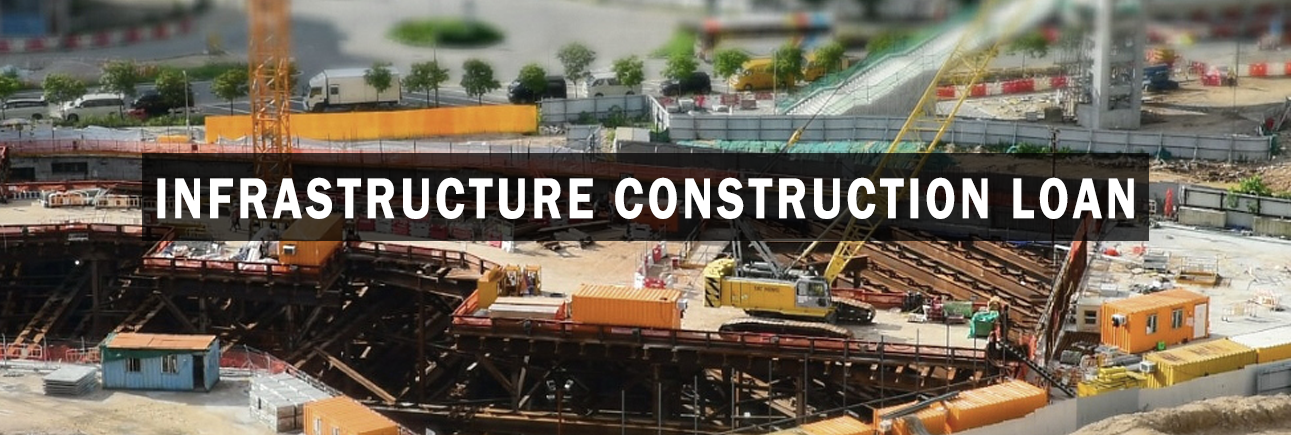

Welcome to our comprehensive guide on infrastructure construction loans, brought to you by CA Vikas Jain. In this blog, we will delve into the intricacies of financing large-scale infrastructure projects that are the lifeblood of our modern economy. Whether you're a government official, a private developer, or simply curious about how these critical projects get funded, this blog will provide you with valuable insights and practical information.
Q1: What is an infrastructure construction loan?
Q2: Why are infrastructure construction loans important?
Q3: What types of infrastructure construction loans are available?
Q4: How can one apply for an infrastructure construction loan?
Q5: What should borrowers consider before applying for an infrastructure construction loan?
In the following sections, we will address these questions in detail, helping you understand the various aspects of infrastructure construction loans. From project planning and feasibility studies to loan approval and project implementation, we've got you covered. Stay tuned as we unravel the complexities of this essential financial tool that drives economic growth and enhances public welfare.
Infrastructure construction loans play a pivotal role in the development of essential public and private projects that form the backbone of modern societies. These loans are specifically tailored to finance the construction, expansion, or improvement of infrastructure projects such as roads, bridges, tunnels, water supply systems, power plants, and telecommunications networks. This detailed guide will explore what infrastructure construction loans are, their importance, types, application process, and key considerations for borrowers.
An infrastructure construction loan is a type of financing specifically designed to fund the construction and development of large-scale infrastructure projects. These loans are typically extended to government entities, municipalities, and private companies engaged in infrastructure development. The primary purpose of these loans is to provide the necessary capital to undertake and complete projects that are essential for economic growth and societal well-being.
Infrastructure construction loans are crucial for several reasons:
Economic Growth: Infrastructure projects create jobs, stimulate economic activity, and improve productivity. Roads, bridges, and ports facilitate trade, while power plants and telecommunications networks support business operations.
Public Welfare: Infrastructure projects enhance the quality of life by providing essential services such as clean water, reliable electricity, and efficient transportation systems.
Long-term Investment: These projects often have long-term benefits, contributing to sustained economic growth and development over decades.
Private Sector Participation: Infrastructure construction loans enable private companies to participate in public infrastructure projects through Public-Private Partnerships (PPPs), leveraging private capital and expertise.
Infrastructure construction loans can be categorized based on the type of project and the source of funding:
Government Loans: Provided by government agencies or development banks to finance public infrastructure projects.
Commercial Loans: Extended by commercial banks and financial institutions to private companies for infrastructure development.
Multilateral Development Bank Loans: Offered by international financial institutions such as the World Bank and the Asian Development Bank for large-scale infrastructure projects in developing countries.
Public-Private Partnership (PPP) Loans: Structured to support collaborative projects between the government and private sector entities, sharing the risks and rewards.
The process of securing an infrastructure construction loan involves several steps:
Project Planning and Feasibility Study: Detailed planning and feasibility studies are conducted to assess the technical, economic, and environmental viability of the project.
Loan Proposal Preparation: A comprehensive loan proposal is prepared, outlining the project details, budget, timeline, expected benefits, and repayment plan.
Submission to Lenders: The loan proposal is submitted to potential lenders, including banks, development agencies, and financial institutions.
Due Diligence: Lenders conduct due diligence to evaluate the project's feasibility, risk factors, and the borrower's creditworthiness.
Loan Approval and Disbursement: Upon approval, the loan agreement is signed, and funds are disbursed according to the project's needs and milestones.
Project Implementation and Monitoring: The project is implemented as per the plan, with regular monitoring and reporting to ensure compliance with the loan terms.
When applying for an infrastructure construction loan, borrowers should consider the following:
Project Viability: Ensure that the project is technically feasible, economically viable, and environmentally sustainable.
Risk Management: Identify and mitigate potential risks, including construction delays, cost overruns, and regulatory challenges.
Financial Planning: Develop a robust financial plan, including realistic cost estimates, revenue projections, and a clear repayment strategy.
Compliance: Adhere to all legal and regulatory requirements, including obtaining necessary permits and approvals.
Stakeholder Engagement: Engage with all stakeholders, including government agencies, local communities, and investors, to build support and ensure smooth project execution.
Infrastructure construction loans are a vital tool for financing the development of essential infrastructure projects that drive economic growth and improve public welfare. By understanding the different types of loans, the application process, and key considerations, borrowers can effectively secure and manage the financing needed to bring their infrastructure projects to fruition. As these projects often have far-reaching impacts, careful planning, risk management, and stakeholder engagement are crucial for their successful implementation and long-term sustainability.